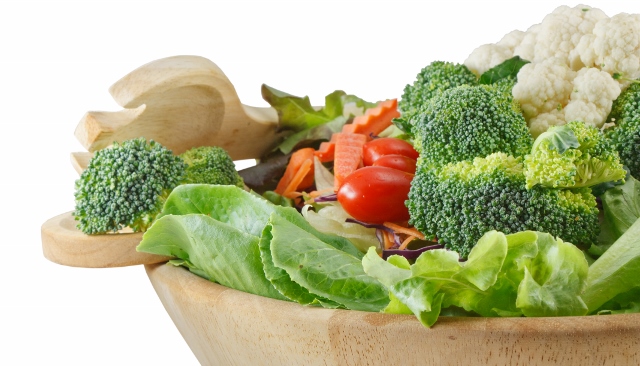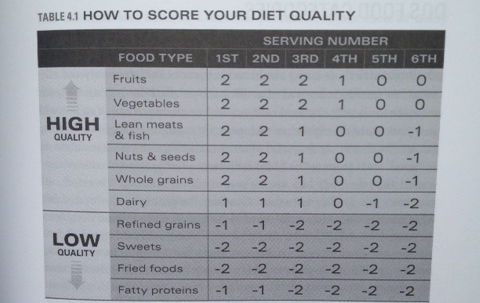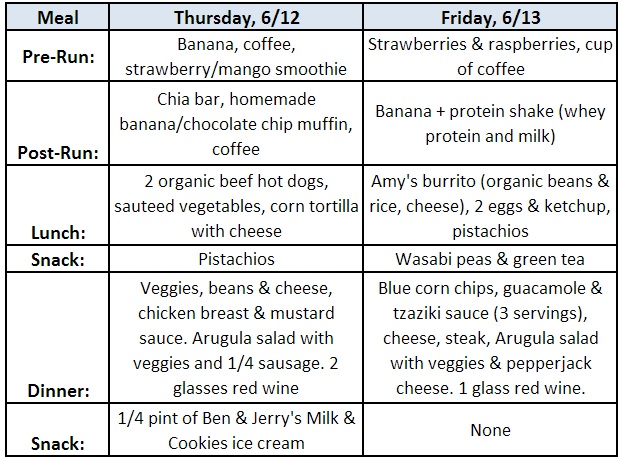The other day I had dinner with a registered dietitian who also has a Masters in Public Health. After my second Coke, I felt the need to explain that I don’t normally drink soda.
Even though I was all jacked up from the the sugar and caffeine rushing through my system, I felt guilty. Yes, an emotion that is largely alien to me.

But despite that, I knew that small decisions like this don’t matter much in the grand scheme of a healthy diet. After all, it’s more important what you do most of the time than what you do some of the time.
And what I do some of the time can be excessive – give me a pint of Ben & Jerry’s and it will be GONE in 15 minutes. But usually I try my best to adhere to Michael Pollan’s rule: “Eat food. Mostly plants. Not too much.”
It’s a simple framework that should influence every runner’s diet plan.
I’ve always been curious about improving the runner’s diet to optimize performance. For my entire running career, I’ve wanted to become a better runner: faster, stronger, more injury-proof. And I believe diet plays a crucial role in how you perform.
But what exactly is an “optimal diet” for runners? There are so many options today:
- Paleo – follow the diet of our pre-Agricultural Revolution ancestors
- Raw food – who needs an oven?
- Alkaline – focuses on aklaline foods and avoids those that are too acidic
- The Beyonce diet – c’mon, I know you were thinking about it
- The “cabbage soup diet” – searched for 74,000 times last month on Google. I can’t make this stuff up.
Is it me, or are we making the runner’s diet plan too complex?
I think so. With so many quick fixes, 3-day diets, and weight loss “cures” out there today, it’s not surprising that many runners have questions about healthy eating.
To help shed light on this topic, I spoke with Matt Fitzgerald about how we should finally understand there is no “one true way” to eat for optimum health.
Matt Fitzgerald on “Diet Cults” and The Runner’s Diet
Matt Fitzgerald is a certified sports nutritionist who has written more than 15 books on endurance sports and nutrition for athletes, including my favorites Brain Training and Racing Weight.
His latest book is Diet Cults: The Surprising Fallacy at the Core of Nutrition Fads and a Guide to Healthy Eating for the Rest of Us.
Matt and I hopped on Skype the other day and talked about what “healthy eating” really means – plus a lot more:
- Plant-based nutrition (can you be a vegetarian and still perform at your peak?)
- “High-quality” food – and why more educated people sometimes make more mistakes when trying to eat better
- Universal food rules and why eating is very similar to running
- Why the humble potato has been unfairly demonized in our society
- How vegetables can be considered unhealthy (seriously!)
- A challenge for you!
Click the button below to listen to our interview:
[audio:https://s3.amazonaws.com/StrengthRunning/Matt+Fitzgerald+_+Diet+Cults.mp3]Or, you can click here to open the interview in a new tab.
Links and notes from the interview:
- Racing Weight: How to Get Lean for Peak Performance
- “The Case Against Vegetables“
- The Glycemic Index
- The Diet Quality Score (DQS)
Practicing What I Preach… My Diet Quality Score
At the end of our discussion, I asked Matt to give you a challenge: one action to improve your diet. His answer was to use the “Diet Quality Score” from his previous book Racing Weight to determine the overall quality of your diet.
He defines it as:
It works by assigning a score to your total eating for one day that is the sum of point values assigned to the individual items you eat throughout the day. The higher your DQS score, the healthier your diet is.
The DQS represents a simple, practical, realistic, and holistic approach to measuring diet quality. It is a tool you can use as often as every day to generate an accurate picture of how healthily you’re eating without making a significant commitment of time and energy.
Typically I’m very hesitant about any type of food tracking system because they’re tedious. Ever tried counting calories? That makes me want to starve myself just so I don’t have to do the math for every meal.
But the DQS is much simpler. Here’s the ranking system:

After keeping a food diary for two days, you can get a big-picture look at my daily diet. It’s also worth noting that writing down my food (and knowing that I’ll be sharing my food choices with tens of thousands of people) made me eat slightly healthier than normal.
A few things to note:
- Milk is whole and organic from 100% grass-fed cows
- Most fruit and vegetables are organic
- Eggs are 100% pastured
Like I said previously, I don’t have the best diet. But here’s what I ate for two days (Thursday and Friday of last week):

My best estimate puts my DQS at 14 for Thursday (“fairly high quality”) and 7 for Friday (“somewhat low quality”).
I’m not positive these are my exact scores but nevertheless, it’s an interesting experiment. Here’s what I learned:
- Sometimes I can eat a lot of dairy, which quickly turns into a negative score.
- I should eat another 1-2 servings of fruit per day.
- Another 1-2 servings of vegetables is a good idea.
- My appetite can be huge and I overeat on chips and dip…
I found using the Diet Quality Score to be relatively painless, though any food scoring is harder than not scoring at all. It can be a useful tool to use every few months to make sure your diet is on track (particularly during periods of heaving training) but it’s not something I’d do on a regular basis.
For more on the DQS and how to eat for endurance, you can read Matt’s book Racing Weight.
Even though I had previously read Racing Weight, it took a specific challenge to get me to actually use it and see where my diet falls. I hope that you improve your diet as well – and then let us know the results in the comments below.
Join me in thanking Matt for a fascinating discussion about diet and health! You can check out his book Diet Cults on Amazon here.
Or, for a free course on nutrition for runners, just sign up here.